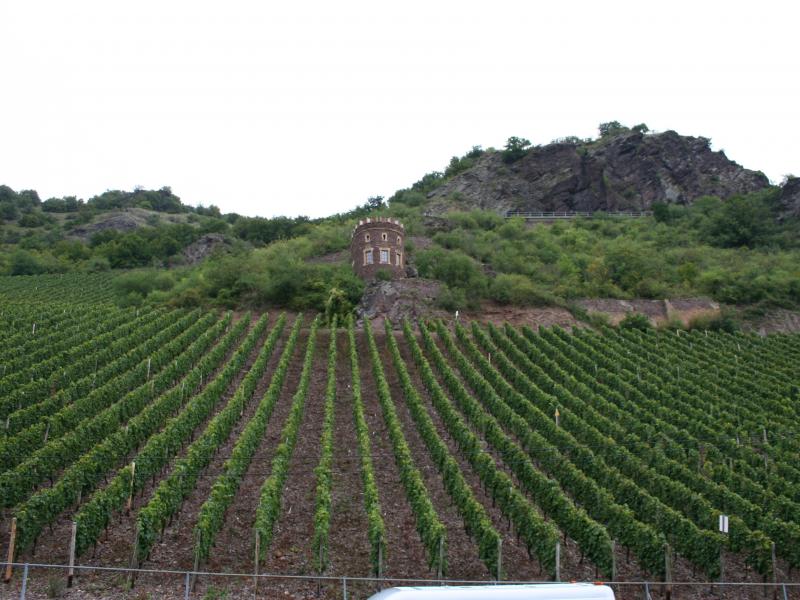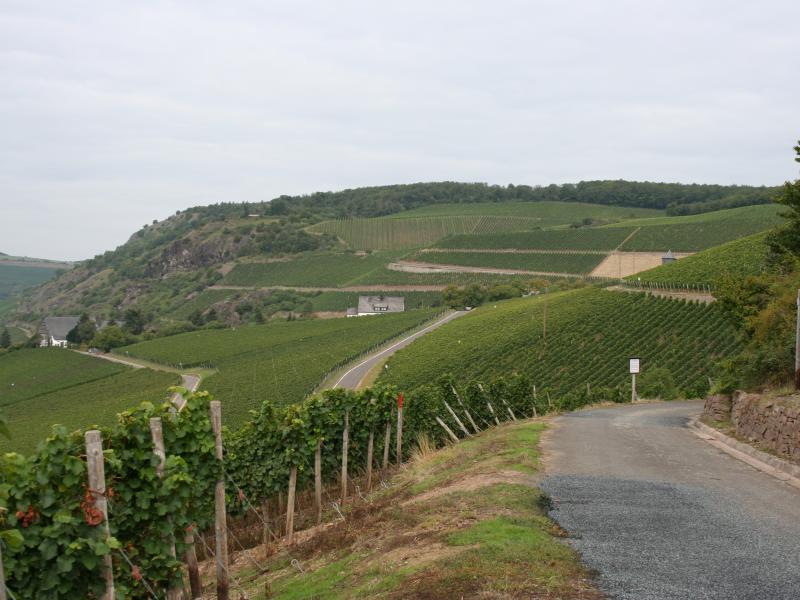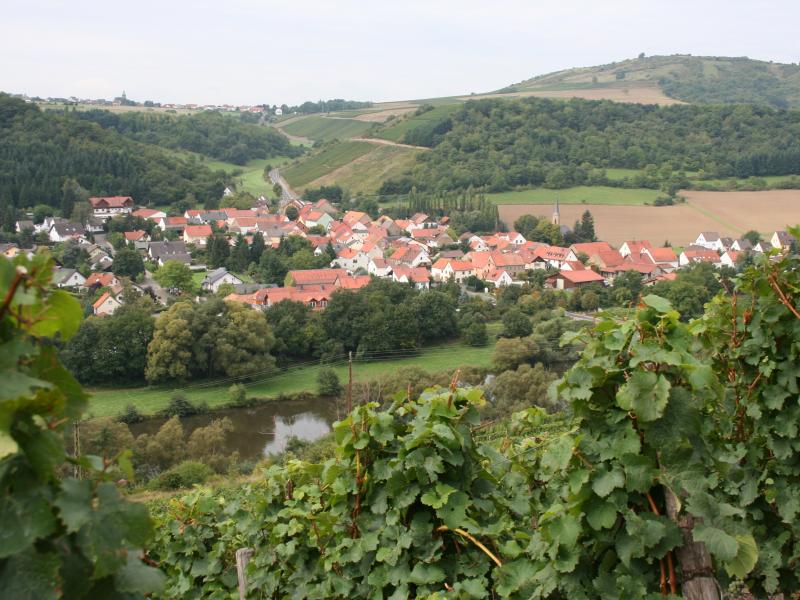The Nahe region is one of Germany’s smallest winegrowing regions comprising just under 11,000 acres of plantings. Fully 75 percent of the vines planted are to white varietals specifically Riesling and Muller-Thurgau. The remaining 25 percent of vines are dominated by the red blending grape, dornfelder. The area is home to many steep vineyard sites and the Nahe River languidly strolls by, bending just before the minuscule village of Oberhausen.
There, Helmut Donnhoff crafts beautifully styled wines that are usually sold out as soon as they are released. Donnoff is producing 120,000 to 150,000 btls of which 50 percent are exported. He produces no reds, but does make small amounts of pinot blanc and pinot gris. His family settled in the Nahe just under 250 years ago and set up a modest farm, raising cattle, sheep and orchards. Over time the estate turned to winegrowing and Helmut has been making his classic wines since 1971.
I sat down with Helmut to taste through his 2007 vintage just before harvest. “Riesling has two talents.” he tells me. “It can produce both sweet and dry wines,” something red wine and most whites cannot boast of. He makes about 10 dry whites and about 15 sweet versions. “My wines are meant to be lean,” he says. Indeed, his wines are extremely clean, pure expressions of what Riesling can do.
Coming from mainly volcanic soils. Helmut picks later than most other producers in the Nahe, “until nearly the leaves fall off,” he says. Typically that means mid-October through mid-November. Donhoff encounters the normal problems with the winemakers in his region, farming is a tenuous thing. Some years the weather cooperates, and others times the weather does not. He’s been doing this long enough that he understands the cycles of nature and works with it, not against it.
“The difference is to make the wines you have,” he states, “not force a fermentation to create a market driven wine. If it ferments as fruity (as opposed to dry) so be it.” He strives for dry Rieslings that are “clean and full of elegance,” as he puts it and expects his wines to age for up to 20 years. In fact his sweet Rieslings can stay open for a week to ten days once the cork has been popped without losing much aroma or fruit.
His wines are tough to find in the U.S. and often he doesn’t even have enough to conduct tastings at his finely appointed winery, therefore reservations when visiting are a must. I ask is he is willing to produce more wine to meet market demand. “No,” he says flatly, a slight smile suddenly crossing his face. “I have only one life.” And he intends to make certain he has time for other interests.
Not far from Hochheim, still in the Nahe region, the little village of Neiderhausen is home to Jakob Schnider Winery. The name is one of those family names, passed down for eight generations and at family gathering if you call out, Jakob, chances area every man will turn to you. The current Jakob who crafts the wines is the son and Jakob, the father tends the vineyards. Jokob (junior) tells me there are 52 different soil types in the Nahe from which comes intense Rieslings.
Each Jakob has their place. “I’m the boss in the cellar, but he’s the boss in the vineyard,” Jakob junior tells me. But when the wine is made, they build consensus to craft their best wines. We sit down and taste through * different Rieslings, both dry and sweet. “I’d prefer to produce mainly sweet wines,” he says even though nearly 50 percent of the 150,000 bottles they produce are dry, mainly for the local market.
Though the Schnidered family has been in the wine game in one facet or another since the lates 1500’s, there is a spirit of innovation. They use glass corks, more closely resembling stoppers rather than cork or synthetic corks. Jakob confesses this is relatively new for him and he’s uncertain how the glass corks will affect his wines in the long run. To unscientifically examine this, he pulls out a 2004 Riesling of the same wine, one using cork, and one using glass. With four years on the wines, are there differences that mar the agebility of the wine itself? The glass cork tasted fresher, a little cleaner, younger, like a wine that had been bottled within a year or two. The cork bottle lost some of the acidity that was prevalent under the glass stopper, but had the oxidation that ages a wine into a deeper and more full bodied wine.
It’s not so much that one was better than the other, but that the glass and cork produced decidedly different wines. As for longer age time, the jury is out on the wines. But Jakob isn’t too concerned. His family has been doing this a long time and no doubt the wines will age well and still be a pleasure to drink. What’s more important to Jakob junior is to maintain the traditions of his family, while looking for innovations to make better wines. What others think is of little importance. “My father is my most important critic, more important than Wine Spectator,” he says.
Another innovation in the Nahe region is a man named Dr. Martin Tesch. Though Tesch is a biologist by education, it’s his love of dry Rieslings that put him on course with wines with a different approach. Tesch is a fan of dry Rieslings and all his seven different Rieslings are dry. Tesch aims for an irrereverant approach, something not looked favorably upon at first. All his wines use a Stevlin Lux screw cap, black bottles made in France and he’s removed the traditional German wording, replacing it with a hipper name.
“I took a strict Bauhaus approach,” towards the packaging, a clean simple presentation, devoid of the usual wordy clutter of many German wines. “I also took an MTV name,” he said of his wine called Riesling Unplugged. Critics called him “gimmicky” and the local papers wouldn’t write a story about Tesch and his wines for six years.
Bucking the trend isn’t easy but it can pay off. Gibson guitars saw the wine and called him. Soon, a partnership formed with Tesch’s unplugged dry Riesling as the main wine at Gibson events and backstage events.” I had the chance to take wine out of the sommelier attitude and put it back on the streets,” he said. For a younger crowd, the name rings true. Ironically, Tesch kept the image of his great, great grandfather on the label, a stern looking man who seems to belie the goofy approach Tesch is taking. He also lives in his great, great grandfather house. “It’s not uncommon here,” he says.
That Germany is home to such a varied approach to wine and winemaking, fiercely traditional, and unconventionally independent should come as no surprise. The global wine market is a tough game and the best and most creative are the ones that have survived. The Nahe region is living proof of this.









